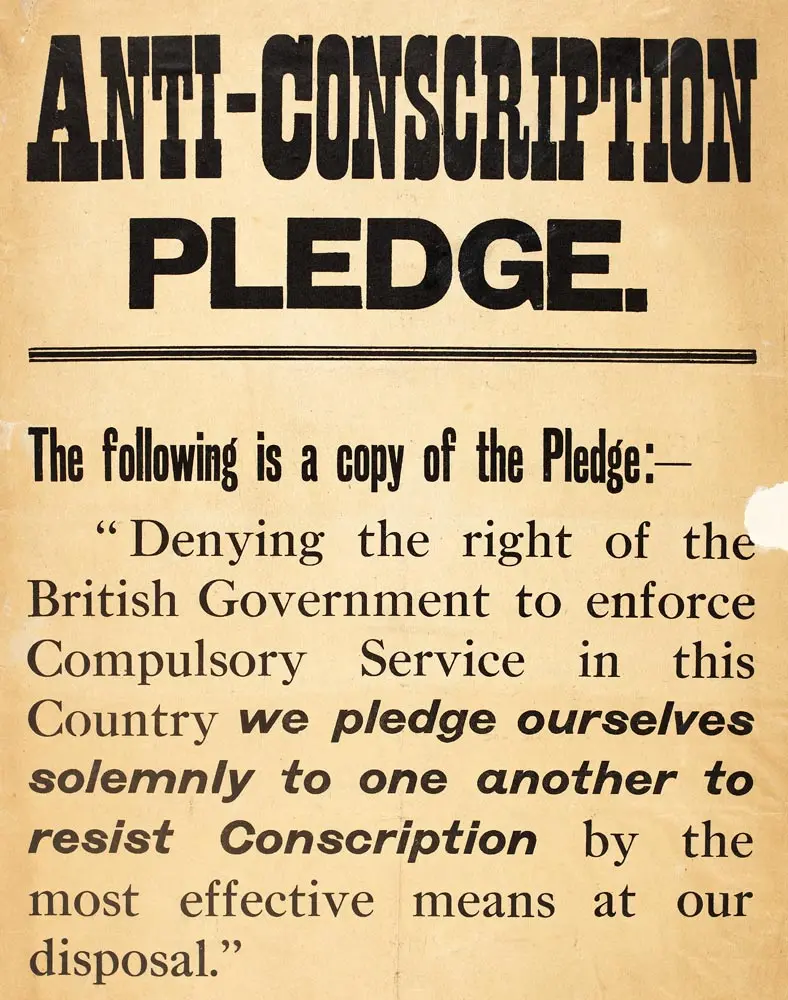
In a previous post, we discussed the RIC and the challenges it faced during 1919 and the first half of 1920. In this edition, we discuss the revitalisation of the Irish Volunteers in Westmeath before 1920.
In tracing these developments, the Bureau of Military History files, especially the witness statements, are important sources. Understandably, we have to recognise that recollections of events may be inaccurate or incomplete, whether by accident or design. It is also apparent that some of the statements contain elements of self-aggrandisement. Even with these provisos, the statements, when used in conjunction with other sources such as newspapers and police reports, provide us with an indispensable source for the period.
Nationally, the revival of the Volunteers which began with the first release of the Easter Rising internees in late 1916 was accelerated by the re-establishment of the organisation’s national executive in 1917. In tandem with those events the Westmeath Volunteers made extensive efforts to organise throughout the county. Thomas Costello, who would later be the commanding officer of the Athlone IRA, described how he joined the Moate section of the Volunteers in early 1917. Not long after Costello joined the organisation, veterans of the Easter Rising visited the area to provide instruction to what was, at that time, a small group. Costello continued:
'Initially we had about twenty-five members. We secured the services of a couple of ex-British Army men who lived in the town as drill instructors. These men were not members of the company and were paid for the service they gave… Parades were held weekly sometimes oftener... We had no arms of any account.'
The Volunteers made themselves an increasingly important part of local events in Westmeath throughout the second half of 1917, a development that was noted by the Crown forces. A military intelligence officer stationed in the midlands was perturbed by the apparent vitality of the movement. While he acknowledged that the Volunteers were almost completely without weaponry, he wrote, in December 1917, that: ‘The whole Sinn Fein movement is peculiarly well-disciplined having regard to similar political organizations in the past. The results of its indoor meetings are very hard to obtain. Drunkenness is almost unknown amongst those deeply implicated, and is apparently severely dealt with.’
An important factor in the success of the Volunteers was the Conscription Crisis that began in spring 1918. While conscription had been implemented in Britain earlier in the First World War, Ireland had been exempted. However, the ongoing carnage on the Western Front and the initial successes of the German ‘Spring Offensive’ had left the British army desperate to increase its manpower. The British government took the decision to extend conscription to Ireland despite numerous warnings from within Ireland that public opinion was implacably opposed to the proposal. The government ignored such counsel, enacting the Military Service Bill in April 1918 and introducing conscription to Ireland. The decision was fiercely resisted by the Irish public.
Just a month before conscription became law, the Volunteers had set up a general headquarters (GHQ) in Dublin with Richard Mulcahy as Chief of Staff and Michael Collins as Director of Organisation. They, along with others, pushed the Volunteers to take a more active role in events and the organisation became a visible presence in the large anti-conscription demonstrations across the country in which there were occasional clashes between the RIC and the public.
Such activities gave the Volunteers much publicity and they also generated a continuing stream of recruits. In Westmeath, the Volunteers took on many new members among men of military age who were anxious to avoid conscription. David Daly, a commandant in the First Battalion, Athlone, described how: ‘Companies trebled their strength over-night, so to speak. Parades were now held every evening and on Sunday in the open, and the services of ex-British soldiers were availed of to whip the new recruits into shape’.
This process was replicated around Mullingar where Michael McCoy, a Captain in the Mullingar Battalion, stated that the Volunteer movement in the eastern half of Westmeath had been moribund throughout 1917 and regained vitality only as a result of the Conscription Crisis. During the early summer of 1918, he wrote: ‘There was a big muster of Volunteers in Mullingar from all over the county’ after which another large muster was held at the Hill of Uisneach later that year.
The British government’s attempt to introduce conscription was defeated and the end of the crisis resulted in a temporary calming of the public mood and a consequent decline in Volunteer numbers. The Westmeath sections of the organisation were not immune to this general drop in membership but, as 1918 came to a close, the Volunteers were still in a stronger position than had been the case a year earlier. As the historian Michael Hopkinson noted, ‘the crisis had done much to raise the importance of the military wing of advanced nationalism vis-à-vis the political side’.
This is borne out by RIC figures: over the course of 1918 Volunteer membership in Westmeath increased from an estimated 150 members to approximately 750. These membership figures, when cross-referenced with the witness statements, appear to be largely correct. During this period of expansion the Volunteers in Westmeath were restructured, with GHQ in Dublin sending Diarmuid O’Hegarty to oversee the process. In the next post, we will discuss the new structure of the Volunteers in the county, as well as their efforts to obtain weapons in preparation for future action against the British army and the Royal Irish Constabulary.
Bureau of Military History Witness Statements; Colonial Office files; RIC Chief Inspector’s monthly reports for Westmeath; Cork Examiner, Freeman’s Journal, Irish Independent, Westmeath Independent and Westmeath Examiner. For more detail, see Ian Kenneally, ‘The War of Independence in Westmeath’ in the Journal of The Old Athlone Society, 2013, and Michael Hopkinson, The Irish War of Independence (Dublin, Gill & Macmillan, 2002).
Content Last Updated/Reviewed: 24/09/2020